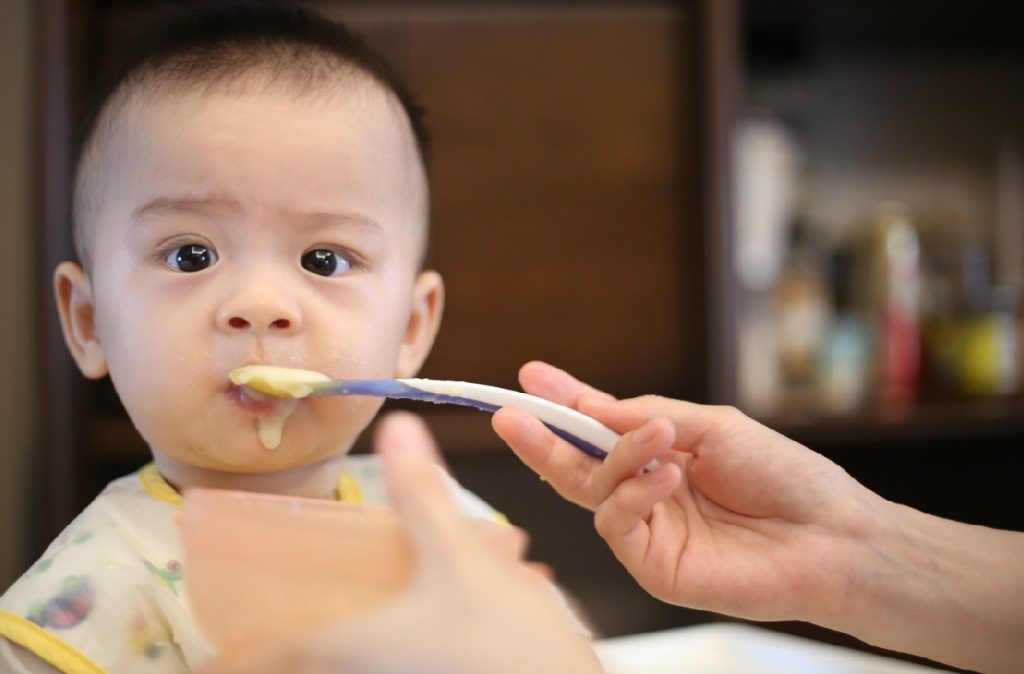Weaning your baby can be a momentous time for both baby and you. Or it could be complicated. More than just the act of introducing solids, weaning your baby represents a transition, a period of change and adjustment when baby begins moving away from an exclusively fluid-based diet such as milk ─ whether formula or breastmilk ─ to solid foods that don’t come from you. To an extent, weaning can also mean he is beginning to move away from you as his sole provider of nourishment and this could mean a big shift to the parent-child relationship.
The End and the Start of a Journey
Some mothers rejoice. They welcome their child’s first step towards independence because they can now stop spending all of their time nursing and go back to pursuing their career.
But some mothers cry. They feel wistful. So soon and baby doesn’t need me anymore? They even call this feeling a “post-weaning depression” which some doctors say is due to hormones when mum stops lactating. A lot of hormones are involved in milk production, they explain, and when the body stops producing the milk, these hormones change, and it can result in feeling the blues.
Whatever the explanation ─ medical or emotional ─ and however mothers feel about it, it’s time to start weaning when it’s time to start weaning.
Baby-led Weaning and Mother-led Weaning
This moment can be either baby-led or mother-led. Baby-led weaning is exactly as it sounds. Baby will one day reject the breast. They no longer need it as they have taken a new interest to what is on the table: new tastes, new textures, and a new found sense of self-reliance as they begin feeding themselves. A whole new world has begun for them.
Mother-led weaning is when mum decides she is ready to stop breastfeeding. Maybe she is getting ready to go back to work, maybe the breastmilk is dwindling, maybe she already switched to bottle-feeding a few months ago and feels that milk alone cannot sustain or provide all the nutrients to a rapidly growing child.
Six Months is the Best Age to Wean Baby
According to Weaning Diet & Dental Health ─ PORTAL MyHEALTH, Ministry of Health, Malaysia, six months old is the best age to introduce solids.
Any earlier than that and it may increase the risk of infections and allergies, due to baby’s underdeveloped digestive system, the guidelines say.
Notwithstanding that, some mums in Malaysia do start the weaning process at the age of four months.
Go Slow and Follow Baby’s Cue
As a rule of thumb, weaning should only begin when your baby is able to sit up without support. This should be around the age of six month.
He may also show other signs such as picking up toys and putting them in his mouth, or an interest in what you are eating and he reaches out to grab the food accurately.
When you see this, you may begin weaning him. You can encourage his intake of solids by postponing, shortening or cutting back on milk feeds and supplement his hunger with food instead.
How to Wean Baby?
The method to weaning is through gradually introducing a variety of solid foods into baby’s diet while still continuing to give breast or infant formula milk. Purees that are blended smooth and mixed with his current formula milk are most recommended for baby’s first meals. Don’t expect him to take to new tastes immediately so don’t switch flavours cold turkey!
In Malaysia, plain white porridge puree is highly recommended as a first-day food simply because it is less associated with an allergic response. Mix it with his usual milk (breast or formula).
He will not be eating much during this time as all this is new to him. Plus, feeding is now via a spoon and not through a teat or nipple. The servings baby will normally eat in these beginning days is only a few teaspoons like the amount that would fill one or two ice cube trays at most.
If baby has no adverse reaction to the porridge after two or three days straight, start introducing another single-type of food like mashed sweet potato. After that, you can proceed with another type of mashed food. Many Malaysians go for mashed banana, pureed carrot, pureed peas and other vegetables. Or they can try cereals such as unflavoured infant rice, barley or oats.
Over the course of a month, if there are no reactions to the single foods, they can be combined into a new flavor for baby.
Baby Learns during the Process of Weaning
Weaning is not just about supplementing baby’s nutritional needs but getting him to move food around his mouth using his tongue and learning to chew and swallow.
It’s a different reflex altogether from sucking and it may take time.
When the baby attempts to feed himself, let him. He is discovering. It teaches him to grasp the food and aim it to his mouth. Let him use his hands after making sure they are clean of course.
Don’t worry if more food winds up on his face and body or all over the floor. That’s what bibs are made for and discovering food is all a part of baby’s learning and growing up process.
Read the next exciting part on weaning on Motherhood.com.my
